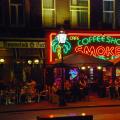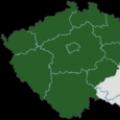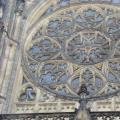Reconstruction plan for the Sestroretsk resort sanatorium. LCD "Russian Seasons". “We don’t trade territories”
Two buildings were built in the early 1960s, one of them has not been used for several years due to dilapidation. They will be dismantled and new ones built in the same dimensions. The third building, the destroyed historical Forest Building (formerly the Forest Pavilion or “San Remo”), will also be restored to the same extent. The total area of buildings after reconstruction will be 40,000 sq.m., the sales area will be more than 25,000 square meters. The project was developed by specialists from Project Culture LLC, and KGIOP approved it. Recently the company received permission for reconstruction.
According to the president of the RBI holding, Eduard Tiktinsky, this will be a kind of Life Wellness space, similar to resort and recreational projects in neighboring Finland. The buildings will have about 400 Wellness rooms ranging from 30 to 50 sq.m. The developer plans to sell them wholesale to one or more investors for rental purposes. If “wholesalers” are not interested in the offer, the apartments will be offered at retail. Estimated cost: wholesale - 110,000 rubles per sq.m., retail - from 130,000 rubles/sq.m.
Reconstruction will begin in April-May 2017, at which time they plan to open sales. The work will be completed by February 2020.
General Director of OJSC Sanatorium Sestroretsky Resort Mikhail Gorba said that the proceeds from the sale will primarily be used for the reconstruction of utility networks. “The construction work will have virtually no impact on the operation of the establishment; the main and most spacious building, built in 1978, is functioning as before. The reconstructed buildings cannot be considered as a separate project, they will be part of the resort. The owners of the premises will rent them out to those who come to us to relax or improve their health.” At the next stage, Mr. Gorba plans to reconstruct the Naval Building, the Kurhaus, and also partially update the garden and park landscape. According to him, the sanatorium has a capacity of 862 beds, 12,000-15,000 people visit it annually, and the average annual occupancy remains at 50-60%. Through renovation, Mikhail Gorba hopes to return the Sestroretsk Resort to its former glory.
A similar “recreational” project with apartments in the Kurortny district is currently being implemented by the Pioneer Group of Companies.
NSP DOSSIER
The Sestroretsk balneological resort was inaugurated in June 1900 on the initiative of one of the leaders of the joint stock company of the Primorsky St. Petersburg-Sestroretsk Railway, Peter Avenarius (1843-1909). For the resort, the society was allocated about 60 hectares (today - more than 52 hectares) at the mouth of the Sestra River, on the shores of the Gulf of Finland. The opening of the resort was attended by the Minister of Agriculture and State Property A.S. Ermolov, Governor of St. Petersburg S.A. Tol, chief commander of the Kronstadt port, Vice Admiral S.O. Makarov and others.
The health complex included the largest indoor winter swimming pool in Russia, connected by a passage to the hospital. The medical rooms located there were equipped with the most advanced equipment of that time, which was not available even in famous foreign hospitals, and the list of procedures contained 52 items.
In the photo: reconstruction project of the Forestry building
Photo: Margarita Mogilatova/ Interpress
RBI Holding became a co-investor in the reconstruction project of the Sestroretsky Resort Sanatorium. As the president of the holding, Eduard Tiktinsky, told reporters, the company is ready to invest 1.6 billion rubles by 2020. According to the top manager, RBI's subsidiary Kurortny LLC will reconstruct two buildings and also recreate one of the lost buildings.
“The holding will become the owner of the buildings and the land on which they stand,” E. Tiktinsky specified.
After completion of the work, RBI plans to launch a project in the format of a wellness center in the medium, medium+ segment. The investor intends to recoup the investment by selling the rooms into the ownership of buyers. “The holding is interested, first of all, in sales, to large institutional investors who could purchase a whole pool of rooms,” added E. Tiktinsky.
According to E. Tiktinsky, the total area of the buildings after reconstruction will exceed 40 thousand square meters. m., of which about 25 thousand are usable area. At the same time, the estimated retail price for rooms will be 130 thousand rubles. per sq. m. There is no talk yet of transferring some of the rooms into the ownership of the sanatorium, however, the Sestroretsky Resort “will subsequently be able to serve as an operator of health and medical services for the ultimate owner of the facilities,” the RBI press service reported.
Reference:
According to the list of affiliated entities as of September 30, 2016, the largest owners of OJSC Sanatorium Sestroretsky Resort are Status LLC (48.6%), North-West Alliance LLC (28.8%).
The project investor will have to overcome a number of difficulties, says Konstantin Kovalev, a former top manager of the Pioneer company, which implemented a similar project in Zelenogorsk (the First Line residential complex). The expert emphasized that sales success will largely depend on two key factors. Firstly, it is important for RBI to attract a high quality operator to run the boarding houses. “This is real estate for wealthy, demanding consumers, so disorder in management will mean a lack of demand,” the expert clarifies. The second key success factor is the correct definition of the project's work concept. In particular, we are talking about determining a package of services that clients will be able to use for free. “If the buyer does not find the procedures he needs in the free list, he will consider it inappropriate to invest in such a center,” says K. Kovalev.
The resort area of St. Petersburg is becoming less and less accessible to residents of St. Petersburg, says member of the St. Petersburg parliament Boris Vishnevsky. As an example, he cites the Sestroretsk Resort, which was previously a unique recreation and treatment area for city residents, but is now actually losing this status, turning into an elite development zone. In addition, the deputy recalls the LSR group, which lays claim to the territory of the Dunes sanatorium in the Kurortny district of St. Petersburg.
The residential complex “Russian Seasons” (formerly “Sestroretsky Resort”) is an RBI project for the reconstruction of the sanatorium. The hospital is located on the street. Maxim Gorky in the Kurortny district. As part of the project, 2 houses built in the 1960s will be restored, as well as the historical building “Forest Building”.
The opening of the “Forest Building” took place at the end of the 19th and beginning of the 20th centuries. The architect was the Austrian Siegfried Lewy. The facades of the pre-revolutionary building will be preserved, but the buildings of the Soviet era are planned to be rebuilt according to the design of the Project Culture studio.
The developer intends to transfer part of the money received from the sale of objects to repair the utility networks of the sanatorium. The resort will still include houses that are being restored.
Completion of work is scheduled for the second quarter of 2020. Despite the completion of construction work, nearby departments of the Sestroretsk hospital will continue to operate at full capacity.
The medical and health center includes 362 rooms with an area of 29-119 square meters. m. Some of the apartments located on the ground floor will have exits to terraces. The last fifth floor will have rooms with lucarnes (special openings in the pitched roof) and arches. “Forest Building” is designed for 16 lounge studios ranging from 76 to 140 sq. m. m.
In addition to housing, there are two commercial premises on the ground floor - with an area of 48.7 and 141.7 square meters. m. A heated parking lot will be built under the buildings with the possibility of lifting to the room.
The Russian Seasons mixed-use complex is located 500 m from the Gulf of Finland. Coniferous trees are planted around the perimeter of the houses. The sanatorium is remote from developed areas, so cafes, shopping centers and cinemas can be reached, for example, by bus or train. In 5 minutes you can walk to the Kurort railway station. The train from here to the center takes 10 minutes.
By car, the road to St. Petersburg takes about half an hour. The nearest exit is 4 kilometers away - onto Primorskoye Highway.
The information on this page was updated on 10/16/2019. Source - developer’s website, official website of the residential complex “Russian Seasons” (formerly “Sestroretsky Resort”), data recorded from the words of the sales department manager.
The Sestroretsk resort on Maxim Gorky Street, 2, in Sestroretsk will be reconstructed into a wellness center. On its territory they are going to recreate the Forest boarding house, which now lies in ruins.
The resort on the shores of the Gulf of Finland was opened in 1902. The main building of the Kurhaus, designed by the architect Siegfried Lewy, has not survived. Today, the park with several buildings is managed by the Sestroretsky Resort Sanatorium OJSC. In recent years, several concepts for the development of this territory have been developed, but all of them remained on paper.
As Kanoner was told by the RBI group, this holding now intends to begin reconstructing the sanatorium in partnership with Sestroretsk Resort. The goal, as the businessmen noted, is “to become a worthy alternative to foreign medical and health centers, primarily to Czech sanatoriums and Baltic wellness complexes.”
The reconstruction project was developed by Project Culture LLC. The company proposed “an original stylistic solution in the spirit of Scandinavian architecture, organically integrated into the surrounding natural environment.”
In accordance with this concept, two sanatorium buildings dating back to the 1960s should be rebuilt as apart-hotels (one of them is no longer in use due to its disrepair). In addition, the wooden Forest boarding house (the author is also called the aforementioned Siegfried Lewy), of which brick ruins remained after the wooden volumes were dismantled in the late 1980s, will be recreated. Premises in the reconstructed buildings can not only be rented, but also purchased as property.
As part of the project, the territory will be improved by restoring the bed of the Vodoslivny Canal. A path will also be laid from the Kurort railway station to the Children's Dunes sanatorium. Finally, all engineering communications of the resort, which today are in a pre-emergency condition, will be replaced (this work is estimated at 200 million rubles). Additionally, three new electrical substations will be built.
The resort will not be closed during reconstruction. Construction work on the sites is promised to be carried out without noise (instead of piles, a shallow pit and construction on a slab are provided), and communications will be laid in such a way as to preserve green spaces as much as possible.
But the ten-story building built in 1978, located closer to the shore of the Gulf of Finland, is not affected by the reconstruction. There is also no talk yet about rebuilding the Kurhaus. Businessmen do not exclude the possibility that they will turn to this idea in the future.
Recently, Kurortny LLC, associated with RBI, received permission to reconstruct the 1st and 2nd buildings. Work is planned to begin at the beginning of the coming year. Completion of the project is scheduled for 2020.
Early 20th century:
Forest boarding house (February 2014):



Project to recreate the Forest boarding house:


"Russian Seasons" (the old name of the Sestroretsky Resort residential complex) is an RBI project, within the framework of which the sanatorium is being reconstructed. The hospital is located in the Kurortny district on Maxim Gorky Street. Two houses built in the early 60s and one historical building are subject to restoration. The "Forest Building" was opened at the end of the 19th and beginning of the 20th centuries, and was designed by the Austrian architect Siegfried Lewy. The facades of the pre-revolutionary building will be preserved, and the buildings of the Soviet era will be rebuilt according to the design of the Design Culture workshop.
The developer will donate part of the proceeds from the sale to repair the utility networks of the sanatorium. The houses being restored will still remain part of the resort.
The company intends to enter the site in May 2017, and complete construction in February 2020. Despite this, departments of the Sestroretsk hospital will continue to operate at full capacity next to the construction site.
Project
The health and wellness center has 362 rooms with an area of 29-119 square meters. m. Some of the apartments located on the ground floor will have access to terraces. On the last 5th floor there are rooms with arches and lucarnes (opening in the pitched roof).
The developer intends to sell the rooms to one investor in bulk - for their further rental. If such an offer does not interest investors, the apartments will be sold at retail.
In addition to housing, there are two commercial premises on the ground floor - 48.7 and 141.7 square meters. Heated parking will be installed under the buildings with elevator access to the room.
Place
The Russian Seasons multifunctional complex is located 500 meters from the Gulf of Finland. The houses are surrounded on all sides by coniferous trees. The sanatorium is remote from developed areas, so you will have to travel by bus or train to cafes, cinemas and shopping centers. The resort railway platform is a 5-minute walk away, from where it takes 10 minutes to get to the city center.
The road to St. Petersburg will take half an hour by car. The nearest exit to Primorskoye Highway is 4 kilometers away.
 Four reasons to visit Amsterdam
Four reasons to visit Amsterdam Panorama Bohemia. Virtual tour of Bohemia. Attractions, map, photos, videos. Bohemia Did not belong to any dynasty
Panorama Bohemia. Virtual tour of Bohemia. Attractions, map, photos, videos. Bohemia Did not belong to any dynasty Temple of the Virgin Mary in front of Tyn
Temple of the Virgin Mary in front of Tyn